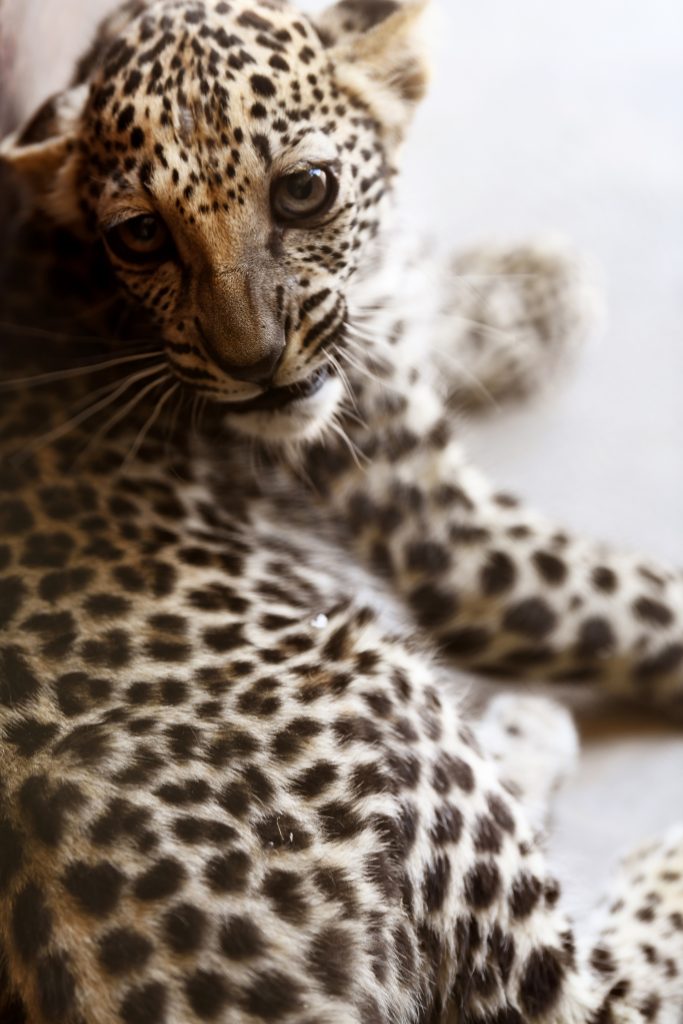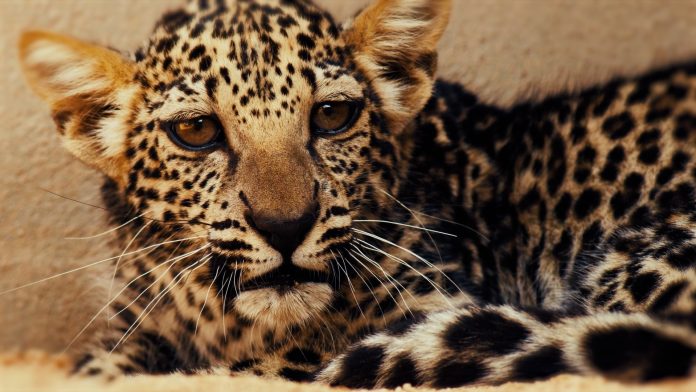Birth of rare Arabian Leopard cub marks a significant milestone in saving a critically endangered species
The Royal Commission for AlUla (RCU), Saudi Arabia announces the birth of an Arabian leopard cub, offering hope for the revival of her critically endangered species.
The female cub was born on April 23. Her gender identification and first health check occurred on July 13. The cub is now one of 16 born in a captive-breeding programme at the Arabian Leopard Breeding Center in Taif, Saudi Arabia as part of a campaign to bring the animal back from near extinction.
Her species numbers fewer than 200 in the wild after centuries of habitat loss and poaching. The International Union for Conservation of Nature (IUCN) says the species is “critically endangered”, which means it is considered to be facing an extremely high risk of extinction in the wild.

The leopard’s habitat, which formerly spanned the Arabian Peninsula and reached into the Levant, is now restricted to three countries: Saudi Arabia, Oman, and Yemen. The breeding centre is operated by RCU, the agency regenerating a 22,561km swath of north-west Saudi Arabia as a global destination for natural and cultural heritage.
Motivation in Arabia to save the leopard is strong. For the region’s inhabitants, the Arabian leopard – known in Arabic as An Nimr Al ‘Arabi’ – has long represented beauty, tranquillity, physical strength, fearlessness and freedom. The animal has occupied a special place in the imagination for millennia and is found in ancient rock art, stories and even everyday expressions.
For this reason, the birth of the cub represents a gain for Saudi cultural heritage as well as natural heritage.
The species will eventually be reintroduced into the wilderness in the mountains of AlUla, by restoring the population through the breeding programme and the preparation of a suitable habitat in which the leopards can thrive. The campaign includes the following initiatives:
- Expansion of the captive-breeding programme with the opening of a state-of-the-art breeding centre to open by early 2024 as part of Sharaan Nature Reserve, AlUla.
- Establishment of the Arabian Leopard Fund, towards which RCU has allocated USD 25 million.
- Extension of partnerships with relevant conservation entities such as the International Union for Conservation of Nature (IUCN) and Panthera.
- Conversion of 80% of the AlUla project’s land into nature reserves, in line with the Saudi Green Initiative. The Sharaan Nature Reserve, for example, will restore and conserve the ecosystem, including indigenous flora and fauna, across 1560 square kilometres.
- Reintroduction of prey species such as Nubian Ibex and Idmi Gazelles.
- Training of AlUla residents as park rangers to safeguard the reserves.
Dr Ahmed Almalki, Nature Reserves Director said: “This birth is significant because it is one step further toward reviving the Arabian leopard. We believe that saving endangered species such as the Arabian Leopard is critical to the protection of our planet and the natural balance of our ecosystem. Our goal at RCU is nothing less than to restore the power of nature’s balance.”
Located 1,100 km from Riyadh, in North-West Saudi Arabia, AlUla is a place of extraordinary natural and human heritage. The vast area, covering 22,561km², includes a lush oasis valley, towering sandstone mountains and ancient cultural heritage sites dating back thousands of years to when the Lihyan and Nabataean kingdoms reigned. The most well-known and recognised site in AlUla is Hegra, Saudi Arabia’s first UNESCO World Heritage Site. A 52-hectare ancient city, Hegra was the principal southern city of the Nabataean Kingdom and is comprised of more than 100 well preserved tombs with elaborate facades cut out of the sandstone outcrops surrounding the walled urban settlement. Current research also suggests Hegra was the most southern outpost of the Roman Empire after conquering the Nabataeans in 106 CE.
In addition to Hegra, AlUla is home to a fascinating historical and archaeological sites such as: Ancient Dadan, the capital of the Dadan and Lihyan Kingdoms, which is considered one of the most developed 1st-millennium BCE cities of the Arabian Peninsula; thousands of ancient rock art sites and inscriptions at Jabal Ikmah; Old Town, a labyrinth of more than 900 mudbrick homes developed from at least the 12 th century, and Hijaz Railway and Hegra Fort, key sites in the story and conquests of Lawrence of Arabia.
About The Royal Commission for AlUla
The Royal Commission for AlUla (RCU) was established by royal decree in July 2017 to protect and safeguard AlUla, a region of outstanding natural and cultural significance in North-West Saudi Arabia. RCU is embarking on a long-term plan to develop and deliver a sensitive, sustainable transformation of the region, reaffirming it as one of the country’s most important archaeological and cultural destinations and preparing it to welcome visitors from around the world. RCU’s development work in AlUla encompasses a broad range of initiatives across archaeology, tourism, culture, education and the arts, reflecting the ambitious commitment to cultivate tourism and leisure in Saudi Arabia, outlined in Vision 2030.






















